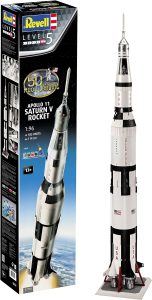Your launch pad is the foundation of every successful flight. "The Perfect Launch Pad: Creating an Optimal Environment for Your Rocket" is your ultimate guide to designing, building, and optimizing a launch pad that not only ensures safety but also enhances performance. Whether you're setting up your first backyard launch or upgrading your existing setup, this guide will help you create the ideal conditions for your rocket to soar.
Quick Links to Useful Sections
- Why the Launch Pad Matters
- Designing the Ideal Launch Pad
- Location and Surface
- Materials and Construction
- Launch Controller Integration
- Safety Features and Environmental Considerations
- Setting Up Your Launch Pad: Step-by-Step Guide
- Step 1: Site Selection and Preparation
- Step 2: Constructing the Base
- Step 3: Installing the Launch Controller
- Step 4: Setting Up Safety Barriers
- Step 5: Final Inspection and Testing
- Model Rocket Launch Pad FAQs
- Your Next Launch: Build the Perfect Foundation and Soar with Confidence
Why the Launch Pad Matters
A well-designed launch pad is more than just a flat surface, it’s a carefully engineered platform that sets the stage for every aspect of your flight. A proper launch pad ensures:
- Stability: A secure and level pad minimizes vibrations and prevents unwanted movement during ignition.
- Safety: Clear boundaries and proper placement keep spectators safe and protect your equipment.
- Performance: An optimal environment reduces external factors that might affect engine performance and rocket trajectory.
When your launch pad is designed with these factors in mind, you create the perfect conditions for a flawless liftoff and a smooth recovery.
Designing the Ideal Launch Pad
The design of your launch pad depends on your available space, budget, and personal preferences. Here are some key elements to consider:
Location and Surface
Choose a flat, open area free from obstacles such as trees, buildings, and power lines. The surface should be firm, grass or dirt can work, but for repeated launches, consider a more stable base like a concrete pad or a custom-built platform.
Looking For The Best Model Rocket Kits? You'll Love These:
Materials and Construction
Durable materials such as treated wood, metal, or composite panels are ideal for constructing a launch pad. These materials should be able to withstand the forces of multiple launches and harsh weather conditions. Reinforce the base with additional supports if necessary to prevent shifting during liftoff.
Launch Controller Integration
A reliable launch controller is a critical part of your setup. Mount the controller securely and ensure that its wiring is safely routed to avoid interference during ignition. The pad should also allow for clear communication with the controller, enabling safe, remote activation of your launch.
Safety Features and Environmental Considerations
Safety is paramount when designing your launch pad. Here are some features to include:
- Safety Barriers: Use cones, ropes, or temporary fencing to create a safe perimeter around the pad, keeping spectators at a safe distance.
- Fire-Resistant Materials: Select materials that are resistant to heat and flame to minimize the risk of fire during engine ignition.
- Weather Protection: Consider a canopy or windbreak to shield the pad from strong winds and precipitation, ensuring consistent launch conditions.
Additionally, environmental factors such as local wind patterns and temperature fluctuations should be taken into account. A launch pad that adapts to its surroundings will enhance both performance and safety.
Setting Up Your Launch Pad: Step-by-Step Guide
Follow these steps to create a launch pad that’s ready for action:
Step 1: Site Selection and Preparation
Choose a flat, open area with minimal obstacles. Clear the site of debris and ensure the ground is level. If necessary, use leveling tools to adjust the surface for a perfectly horizontal launch base.
Step 2: Constructing the Base
Build a sturdy base using durable materials. For a DIY approach, assemble a platform with treated wood planks secured to a stable frame, or pour a small concrete pad. Ensure the base is large enough to accommodate your rocket, launch controller, and safety barriers.
Step 3: Installing the Launch Controller
Mount your launch controller securely at the center of the pad. Connect it to your power source and test its functionality. Make sure it’s easily accessible for the launch operator while remaining protected from the elements.
Step 4: Setting Up Safety Barriers
Erect clear, visible safety barriers around the pad. Mark a safe perimeter with cones or caution tape to ensure that bystanders maintain a safe distance during ignition.
Step 5: Final Inspection and Testing
Conduct a final inspection of your launch pad setup. Verify that the platform is stable, the controller is working, and all safety measures are in place. Perform a dry run or simulation to ensure that every component is ready for the real launch.
Model Rocket Launch Pad FAQs
Here are some frequently asked questions to help you optimize your launch pad setup:
1. What is the most important factor in choosing a launch pad location?
The location should be flat, open, and free of obstructions. This ensures a stable base and reduces risks associated with debris and unpredictable wind patterns.
2. What materials are recommended for constructing a durable launch pad?
Materials such as treated wood, metal, and composite panels are ideal because they offer durability and can withstand multiple launches and varying weather conditions.
3. How can I ensure that my launch pad remains stable during ignition?
A stable launch pad is achieved through a well-constructed, level base with proper anchoring. Reinforce the pad if necessary and perform regular inspections to maintain stability.
4. What safety measures should I include in my launch pad design?
Incorporate safety barriers to keep bystanders at a safe distance, use fire-resistant materials, and ensure that the launch controller is securely mounted and easily accessible.
5. How do weather conditions affect the launch pad setup?
Weather can impact the stability and performance of your launch pad. Ensure your pad is built to withstand wind and precipitation, and consider adding protective structures like canopies or windbreaks.
6. Is it necessary to use a launch pad, or can I launch from any flat surface?
While you can launch from any reasonably flat surface, a dedicated launch pad offers enhanced stability, safety, and control, leading to a more predictable and successful launch.
7. Can I build a launch pad on uneven terrain?
It’s best to choose or prepare a site that is as level as possible. If you must use uneven terrain, invest extra time in leveling the area and securing the pad to ensure stability.
8. What tools are essential for constructing a launch pad?
Essential tools include a level, measuring tape, saw (if building a wooden platform), drill, and fasteners. Depending on your design, you might also need concrete tools if you’re pouring a pad.
9. How often should I inspect and maintain my launch pad?
Regular maintenance is crucial. Inspect your launch pad before each launch for any signs of wear, damage, or instability, and make repairs as necessary.
10. What should I do if my launch pad is damaged or unstable?
If you notice any damage or instability, repair or reinforce the pad immediately before attempting a launch. Safety should always be your top priority.
Your Next Launch: Build the Perfect Foundation and Soar with Confidence
A meticulously designed launch pad is the unsung hero of every successful rocket flight. By selecting the ideal location, using durable materials, and following a detailed pre-launch checklist, you create an environment where your rocket can perform at its best. With safety and stability as your cornerstones, each launch becomes not only a technical achievement but a thrilling experience.
Prepare your pad, verify every detail, and then watch as your rocket takes off with precision and grace. The perfect foundation sets the stage for endless possibilities, so build it right, and let your rocket soar!
Looking For The Best Model Rocket Kits? You'll Love These:
Useful Interruption: Dive deeper into the world of Model Rockets with our most popular sections. If there is anything you think is missing or anything you would love for us to write about, just give us a shout.
- Getting Started & Basics With Model Rockets
- Model Rocket Design, Build & Customization
- Model Rocket Propulsion & Engine Technology
- Model Rocket Launch Techniques & Recovery
- Model Rocket Advanced Rocketry & Innovations
- Model Rocket DIY and Customization
- Model Rocket Equipment Reviews & Digital Tools
- Community, Competitions & Education
- Model Rocket Troubleshooting & FAQs
- Model Rocket Bonus/Seasonal & Niche Topics
A group of model rocket enthusiasts gathered at a field for their weekly launch event. Among them was Dave, a seasoned builder known for pushing the limits of hobby rocketry. This time, he had outdone himself.
“Ladies and gentlemen,” Dave announced, dramatically pulling a cloth off his latest creation, “I present to you: The Kraken!”
The crowd gasped. This wasn’t just a model rocket, it was a monster. The thing stood 8 feet tall, had six clustered engines, and was covered in enough duct tape to qualify as a classified aerospace project.
“Dave,” muttered Steve, the cautious safety officer, “Have you, uh… done the math on this?”
“Math?” Dave scoffed. “I built it in my garage at 3 a.m. with parts from eBay. This is an art piece, Steve.”
The countdown began.
5…
4…
3…
2…
1…
The engines ignited with a BOOM, and The Kraken shot up… kind of. It immediately did a violent barrel roll, narrowly missing the spectators before skyrocketing at an angle that could only be described as “legally questionable.”
The crowd collectively ducked as The Kraken flew straight over the adjacent cornfield, where Old Man Jenkins, the grumpiest farmer in town, was minding his business.
KABOOM!
The rocket disappeared behind the barn. A moment later, a flaming piece of Estes igniter wire landed at Steve’s feet. The silence was deafening.
And then, an unmistakable sound echoed across the field.
Jenkins’ shotgun being cocked.
“DAVE!!!” Steve shouted. “RUN.”
And that was the day Dave invented the first-ever biologically powered rocket booster: pure adrenaline.
To this day, nobody knows where The Kraken landed, but legend has it, it still haunts the skies, terrifying unsuspecting drones and low-flying birds.










